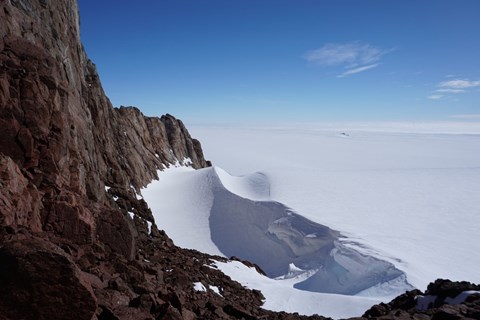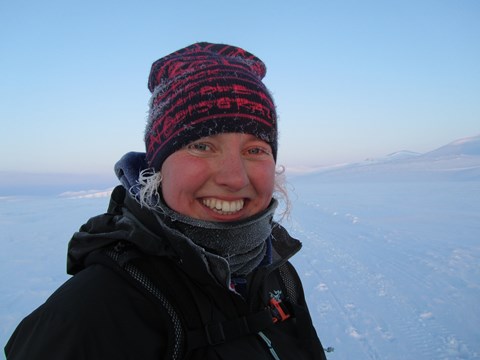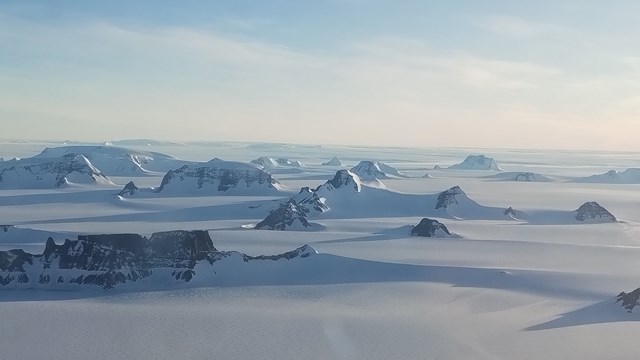Stardust and Magic
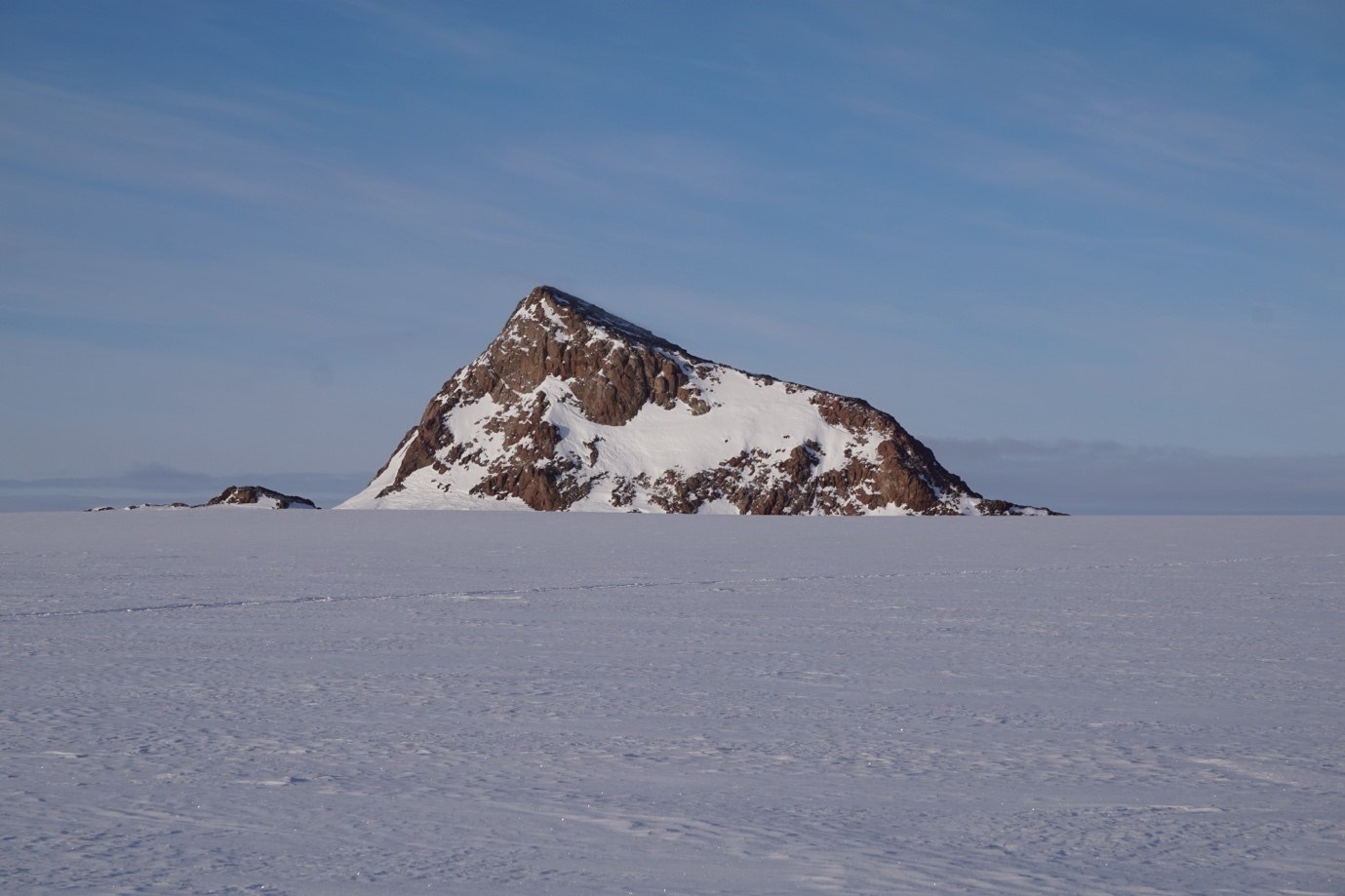 Was this nunatak covered by the ice sheet in the past thousands of years? Our newly collected samples will tell. Photo: Martim Mas e Braga.
Was this nunatak covered by the ice sheet in the past thousands of years? Our newly collected samples will tell. Photo: Martim Mas e Braga.
Text by: Jane Lund Andersen, researcher at DML 2023/24
My name is Jane and I am taking part in this expedition as a researcher on the MAGIC-DML (Mapping, Measuring, and Modelling Antarctic geomorphology and ice change in Dronning Maud Land) project. In this post I will write a bit about our scientific mission and explain how we use stardust to understand how the Antarctic Ice Sheet has changed over thousands of years.
The Antarctic Ice Sheet is huge. In fact, the Dronning Maud Land sector, where we have been working for the last seven weeks, is alone as big as Greenland, Baffin Island, and Svalbard combined. But it is also a difficult place to get to, and we, therefore, know relatively little about how the ice sheet is going to respond to the ongoing global climate changes. This is important because increased ice loss from Antarctica would raise global sea levels and negatively impact coastal communities and cities globally. In fact, ice loss in Antarctica is far more important for sea-level rise in Scandinavia than the same ice loss in Greenland would be. This is because the gravitational attraction from the Antarctic ice sheet pulls seawater away from Scandinavia and down into the Southern Ocean. If the Antarctic ice melts, we, therefore, both increase the amount of water in the oceans and lose this gravitational pull, leading to more total sea-level rise. To better understand the future response of the Antarctic Ice Sheet, the MAGIC-DML project is trying to reconstruct how the ice sheet reacted during past climatic changes. But how do we figure out when and where the ice sheet changed in the past? It’s a detective puzzle, and to solve it we must start in a Galaxy far far away…
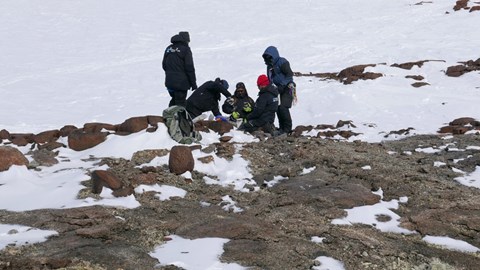
Stardust slams into Earth’s surface
When stars die in supernova explosions, particles are accelerated out in all directions by the shockwave. Some of this ‘stardust’ travels through the Universe and ends up hailing down on Earth. As the high-energy dust slams into Earth’s surface, new particles known as cosmogenic nuclides are formed in surface rocks. This process happens all the time, all over our planet, but the rates are higher at high latitudes such as Dronning Maud Land. Only when the rocks are blanketed by thick ice the production shuts off. So, by measuring the concentration in rock surfaces along the mountains (nunataks) that stick above the ice surface today, we can reconstruct when they were last blanketed in ice. This helps us piece together the puzzle of how the Antarctic Ice Sheet reacted to climatic changes in the past and understand how fast it could respond in the future.
We are currently coming to the end of the third and last expedition of the MAGIC-DML project. Each previous expedition has added an important piece to the puzzle. From the first expedition, we learned, for example, that the nunatak Basen, where the Swedish station Wasa is located, was completely covered in ice until about 8 thousand years ago. This means that the ice sheet was probably around 400 m thicker back then. From the second expedition, we learned that the ice sheet thinned rapidly further east along the large, fast-flowing ice stream Jutulstraumen between ca. 9 thousand years ago and the present.
This year, we have been riding our snow scooters to the wild west of Dronning Maud Land and collected samples from Utpostane, Vestfjella, Mannefallknausane and Tottanfjellet nunataks. We’ve been extremely lucky with the weather and have been able to go almost everywhere we had planned to go. In fact, we have had so many field days and collected so many rock samples that the expedition leader day-by-day looked increasingly worried about the hassle of bringing all these many kilos of rocks with us back north.
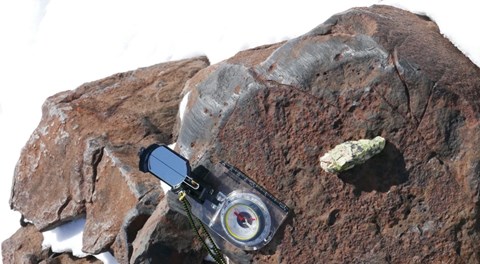
Efficient team
The field team has been incredible. Usually, when I do fieldwork, I am quite involved in collecting the rock samples, but this time, the team has been so efficient that I’ve been mostly reduced to ‘she-who-points-at-rocks-and-take-notes’. Only occasionally did someone ask if I really had to point to the hardest-to-get-to-corners of the nunataks closest to the steepest edges... And in camp, by the time I started wondering whether it might be time to go and dig out some more snow, Karna had already melted snow, boiled the water, and filled the thermoses for another day’s worth of drinking water. Oh, and dinner was ready too.
Now we’ve been back at Wasa for a week, the samples have been snuggly packed in boxes, and we and them are just about ready to go back north as soon as the weather allows it. Ahead lies a few years of sample analyses involving lots of laboratory work before we can see the results and put the next piece in the puzzle of the Antarctic Ice Sheet. It will be a magical feeling!
